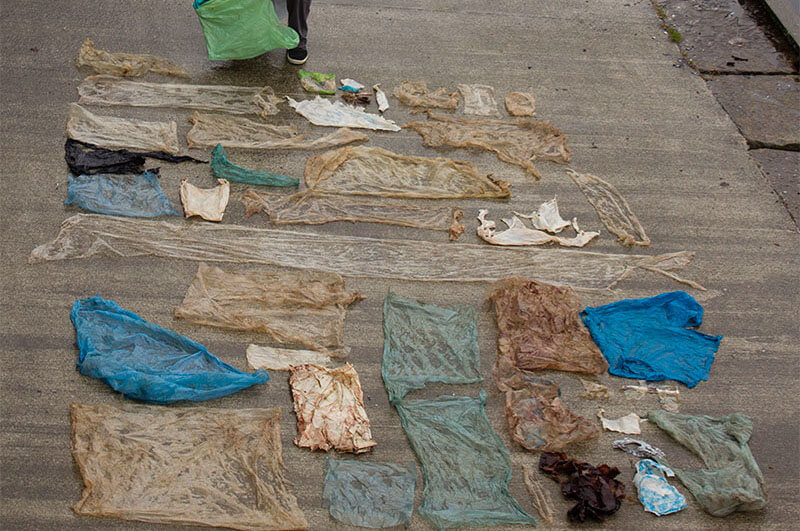How is it that 30 plastic bags find their way into the stomach of a cetacean? The issue was raised after the discovery of a Cuvier’s beaked whale stranded in Norway last January, whose digestive system was filled with plastic bags and other human-generated refuse. Did the beaked whale deliberately eat the garbage?
Plastic bags mainly affect tooth whales because they eat large prey. When swollen with water, bags can resemble squid, a favourite prey of beaked whales and sperm whales. Cetaceans might therefore be deceived about the nature of their meal, despite their echolocation skills…
 |
Considering that a giant squid can measure over 10 metres long, it is understandable that a 13-metre long fishing net or a 70 cm car part might be discovered in a sperm whale beached on Germany’s North Sea coast Except that these items do not digest the same way as fish do, and cases of perforation, lesions, blockage or malnutrition have been documented in marine mammals.
Smaller objects can be equally harmful and swallowed at the same time as prey. As early as 2011, Whales Online addressed the issue of plastic in the St. Lawrence. At that time, Catherine Couillard, head of ecotoxicology research at the Maurice Lamontagne Institute (MLI) of Fisheries and Oceans Canada, stated that “Ingestion of plastic can sometimes lead to the animal’s death or progressive wasting with waning health and reproductive problems. Plastic pieces are substrates that increase the risk of attachment and introduction of invasive species that may compete with native species and disrupt the ecosystem.” In other words, in addition to harming animals directly, refuse can also affect them indirectly by modifying the ecosystem via the presence of substances that fauna and flora are not accustomed to.
Not as bad for baleen whales?
Up until now, baleen whales, also known as Mysticeti whales, have been less affected by large pieces of plastic, though they do ingest microplastics, i.e. fragments measuring less than 5 mm in diameter. These small pieces affect them in a more insidious manner. When they decompose, plastic releases toxic substances. These substances are also ingested by the whales’ prey, which in turn contaminate them. This is the principle of bioaccumulation.
Whales can also get entangled in garbage, sometimes causing injury or even death.
Sources
Whales Online: News on Pollution
Plastic Pollution: The Impact on our oceans and what we can do about it (SloActive, 2018)
Are baleen whales exposed to the threat of microplastics? (Marine Pollution Bulletin, 2012)
As Main Meal For Sperm Whales : Plastics Debris (Marine Pollution Bulletin, 2013)
Espagne : un cachalot tué par le plastique des serres d’Andalousie (Sciences et Avenir, 08/03/2013)
L’estomac d’une baleine échouée contenait trente sacs de plastique (Radio-Canada, 04/02/2017)
Microplastic in a macro filter feeder: Humpback whale Megaptera novaeangliae (Marine Pollution Bulletin, 2015)
Les plastiques biosourcés présentent-ils moins d’impacts négatifs pour l’environnement que les plastiques issus de la pétrochimie? (Université de Sherbrooke, 2014)
Sperm Whales Found Full of Car Parts and Plastics (National Geographic, 31/03/2016)






